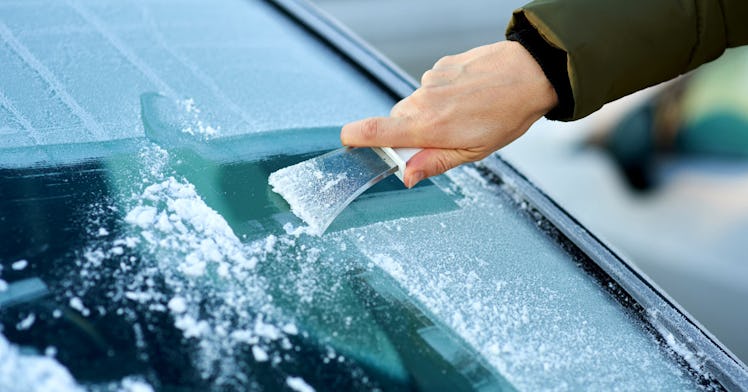Expert Tips for Removing Ice From Sidewalks, Windshields, Roofs & More
A scientist stationed at one of the coldest observatories in the U.S. on how to best fight the deepest freeze.

Winter brings lots of snow to shovel, yes. But it also unleashes a far more serious opponent: ice. When you’re chipping away at a frozen windshield, tossing salt on a sidewalk, or trying to clear large sheets from a roof, there are several tips and tricks to keep in mind that will make the task easier — and safer. For that, we spoke to Sharon Schilling. She’s the president of the Mount Washington Observatory, which, at more than 6,000 feet, stands as the coldest, windiest, and snowiest place in the Northeast United States. She and her team of scientists know a thing or two about how to deal with the persistent ice that, left unchecked, could impact the observatory’s 85-year legacy of research and education. Here, with Schilling’s help, are eight expert tips for removing ice from your sidewalks, windshield, roof, and more.
Focus on Essential Areas First
“When it comes to surviving on the summit, we have to let nature take its course,” Schilling says, explaining that her team prioritizes which areas to clear when the weather is especially bad. When it’s really blowing, focus your ice-removal efforts on walkways, paths to vehicles, entrances, and other high-traffic spots that are most critical for daily life. After the storm blows itself out, you can tackle the rest, including sidewalks and the full drive.
Choose the Right Salt for the Right Temperature
When temperatures drop below 10 degrees, the effectiveness of rock salt or sodium chloride drops to nearly zero. Therefore, the prepared homeowner should have both salt and alternate ice-melters available and easily accessible. Look for products made from calcium chloride, a compound which works down to approximately –25 degrees.
Dip Into the Sandbox
Salt and ice-melters have their purpose, but adding sand creates a mixture that provides grip for a one-two punch. “Sand gives us better traction,” Schilling says, “and salt helps thaw and remove ice over time.” Opt for a big bucket of silica, a granulized form of quartz stone, but take note that less is more: laying it on too thick will cause problems in the spring, as excessive quantities can clog drains.
De-Ice a Frozen Windshield With an Alcohol Mix
Believe it or not, “We do what everyone else does,” Schilling says of WMO’s handling of icy vehicles: scrapers, pre-heating vehicles, and turning on the defrosters. In a pinch, however, spray a 2:1 mixture of isopropyl alcohol and water onto a frozen windshield. The compound lowers the freezing point of water, which melts ice, leaving a clean, dry windshield.
Mind Higher Areas
Schilling and her team carefully monitor areas prone to ice buildup, including antennas, dishes, and overhangs, to see if excessive weight is threatening to pull structures down, which might hit someone or something. “Take a look around and see what might present a hazard should it become ice-bound,” she says. Once identified, something as simple as a whack with a long broom handle can knock excess ice loose and prevent it from becoming a danger.
Use Hand Sanitizer to Fight a Frozen Lock
Best practices on Mount Washington include never leaving vehicles on the summit overnight, as locks can freeze solid. For you, that might mean moving a vehicle inside a garage or using a cover, thereby lowering exposure to elements. But if you do find yourself locked out, squirt an alcohol-based hand sanitizer on your key and insert it in the lock. Like the isopropyl alcohol hack on your windshield, the hand sanitizer thaws by lowering water’s freezing point. Thirty seconds later, you’ll be ready to roll.
Recruit Cat Litter to Keep Your Car Fog-Free
Ice and fog inside your vehicle the next morning comes from moisture accumulating over time. “You’re exhaling, and that builds up,” Schilling explains. If you have a garage, simply open up your back windows to let out your commuter heavy breathing. Otherwise, fill an old sock with a few scoops of common kitty litter and leave it under your seat. The super-absorbent substance acts as a desiccant, leaving you with a clear interior.
This article was originally published on